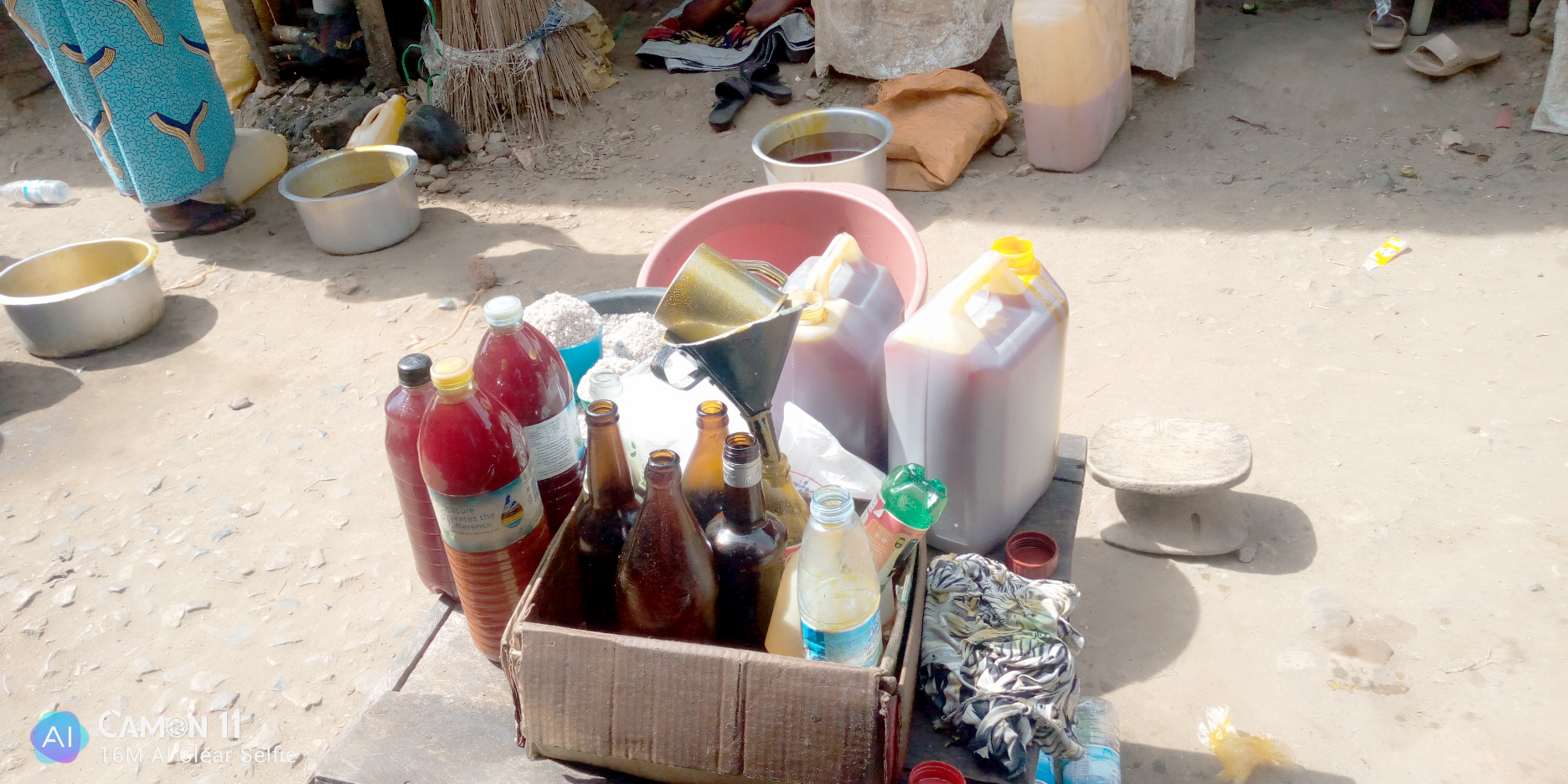How Bundibugyo locals are beating high edible oil prices

Palm oil packed in bottles and containers ready for sale in Bundibugyo District. PHOTO / LONGINO MUHINDO
What you need to know:
- Ms Biira has since not looked back. “My oil is now on high demand since most families have resorted to purchasing it for home use,” she says.
- Her litre of oil goes for Shs7,000, which her clients find cheap compared to the current brands of cooking oil on the market, which go for between Shs9,000 and Shs12,000 a litre.
Ms Jessica Biira derives her livelihood from extracting locally processed palm oil and selling it in Bundibugyo Main Market.
But Ms Biira was struggling to realise any serious profits from the trade until the start of the year.
“I have been in this business for the last five years, but it hasn’t been commercially viable until this year when the prices of cooking oil skyrocketed,” she explains.
Ms Biira has since not looked back. “My oil is now on high demand since most families have resorted to purchasing it for home use,” she says.
Her litre of oil goes for Shs7,000, which her clients find cheap compared to the current brands of cooking oil on the market, which go for between Shs9,000 and Shs12,000 a litre.
Oil palm growing takes place on a small scale in Bundibugyo District and Ms Biira says more area residents are beginning to embrace the locally processed oil to beat rising prices of the commodity on the global market.
Big boost
She says more people now import palm oil seeds from the neighbouring DR Congo through Busunga border to extract more edible oil.
Ms Everketi Buswalya, a farmer in Kinyante II Village, says an oil palm tree takes four years to mature and that in the last five months, more people have started growing the trees.
“For the past years I have been not earning money from this business because I was on small scale, but this time the demand for palm oil has increased, people come looking for it; these days I cannot fail to earn Shs20,000 in a day when I go to market,” she says.
Ms Oliver Kabonesa, another farmer, says she extracts at least one litre of palm oil from a bunch of seeds.
She said when the seeds ripen, they are harvested from the tree. The outer part of the seed is then removed.
“I first boil the reddish yellow seeds in a saucepan to soften them, and then the boiled seeds are crushed using a processing machine to extract oil from the seeds. The oil is then boiled for about 40 minutes to separate it from the pulps or crudes,” she says.
Ms Kabonesa says the extraction process is done several times to get first class oil.
However, she says her efforts to boost her business has been hampered by lack of latest technologies.
Ms Barbra Basemera, the chairperson of palm oil traders in the district, says they are facing a challenge of high taxes imposed on them at Busunga border point.
“The tax that we pay at the border has increased from Shs3,000 to Shs5,000 per jerrican yet our business is still small; they should exempt us from paying such taxes for us who are in small business,” she says.
Mr Geoffrey Tinkasimire, a senior clinical officer at Bundibugyo hospital, recommends the use of palm oil, saying it is good for body health but warns that one should prepare it properly.
Govt efforts
Oil palm is one of the most sought after crops in the world today from which comes about 40 percent of all traded vegetable oils—raw material for cooking oil and soap. Oil palm growing in Uganda is already taking place in the island districts of Kalangala and Buvuma where government is growing the crop on nucleus estates and selected pieces of land owned by out growers. Currently, Uganda produces at least 40,000 tonnes of oil palm but the ministry of Agriculture through the National Oil Palm Project (NOPP) strives to increase it to 80,000 tonnes in the coming few years. Under the second phase of the project which covers Buvuma Islands, the government also plans to extend oil palm growing to other districts such as Masaka, Kyotera, Buikwe and Mukono.




